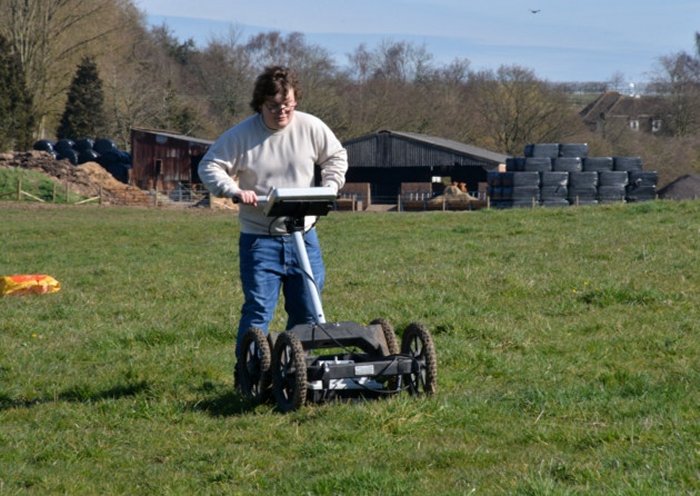MessageToEagle.com – Harpenden is a small town in the county of Hertfordshire, England. Analysis from ground penetrating radar (GPR) survey reveals strong anomalies consistent with a large rectangular stone building in Harpenden.
Now scientists are considering the possibility something must be hidden beneath the ground. Could it be an ancient undiscovered Roman city?
The intriguing discovery was made by Alexander Thomas, a PhD student at Bristol University’s department of archaeology and anthropology.
Alexander Thomas studied GPR data from the survey conducted at Batford Farm, off Common Lane in Harpenden.

Alexander grew up in Harpended and is very familiar with the surroundings. In his opinion the rectangular feature on the north side was “not the remains of the [previous] Bonny Boys Farm buildings, as shown in the Tithe and Ordnance Survey maps of the 19th century.
The majority of the farm buildings would have been destroyed with the extensive widening of Lower Luton Road in the 20th century.
“The building is situated further north than Bonny Boys Farm, but to the south of the farm boundary, which can be seen in the 1799 map.
An extensive search has been conducted at Hertfordshire Archives to ascertain if there was an earlier brick or stone building in this position in the post-Medieval era. There was not,” Alexander Thomas said.
So what are these discovered anomalies?
According to Alexander Thomas it’s possible either an ancient Roman building is hidden beneath the ground or perhaps even a series of workshops or structures designed for trade.
The PhD student also found the existence of a possible shaft which extends down from the entrance of one of the holes.
He said that if the structure was a Roman industrial building, work carried out there could be connected to deneholes – chalk extraction pits – discovered in the same GPR survey.
See also:
Satellite Images Reveal 10,500-Year-Old Lost City Hidden Beneath The Forest Of Oklahoma
Satellites Discover World’s Oldest Superhighways In Lost Ancient City Of El Mirador
Londinium: Ancient Roman Outpost That Became Powerful City Of London
“This and other circumstantial evidence, such as the pits, suggest there may be tunnels beneath. Mining activity in the immediate area adds weight to the hypothesis that in the pre-Medieval period the area around Batford Mill was a hub of industrial activity. Further investigation is required,” Alexander Thomas said.
Dr Kris Lockyear, a senior lecturer in Archaeology at the Institute of Archaeology, UCL who helped Alexander Thomas to carry out the survey said he doesn’t agree with the interpretation of the data.
“If nothing else, the complete lack of any Roman material culture, for example pottery, brick, roofing tiles, on the surface of that field argues against the presence of any Roman structure whatsoever, let alone some massive industrial building.
The pits are perfectly ordinary chalk pits which are dotted all over the Hertfordshire countryside used to extract chalk for marling, not for any industrial process,” Dr. Lockyear said.
If Alexander Thomas is correct in his assumption, it is certainly a very rare discovery. However, in order to determine what is buried beneath the ground more investigations must be carried out.
MessageToEagle.com
Expand for references






